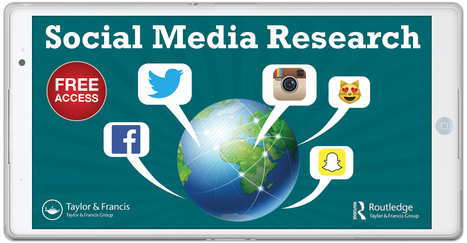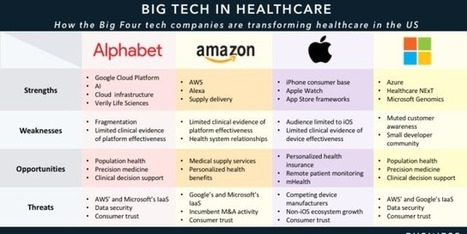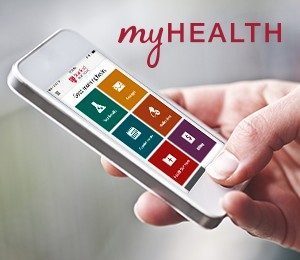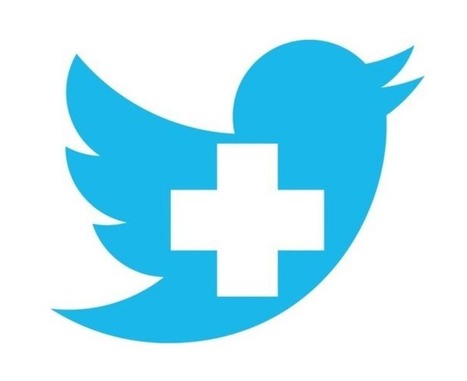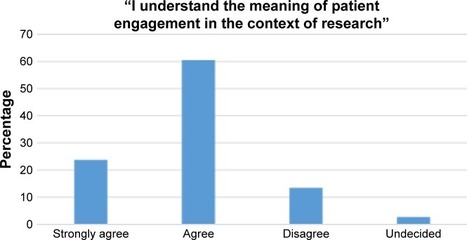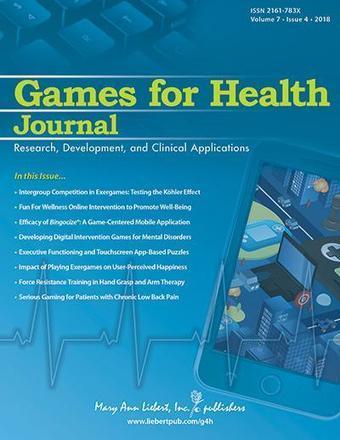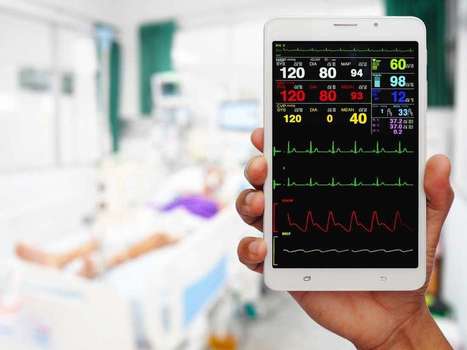 Your new post is loading...
 Your new post is loading...
Dive Brief: - FDA on Friday authorized the first self-fitting hearing aid that can be programmed without the help of a healthcare provider.
- The Bose Hearing Aid uses what is called wireless air conduction technology that captures sound vibrations through a microphone. The signal is processed, amplified and played back through an earphone in the ear canal. Patients can adjust the sound through a mobile phone application.
- In its statement announcing approval of the device, FDA said it is working to draft regulations for a new category of over-the-counter hearing aids in compliance with the FDA Reauthorization Act (FDARA) of 2017. The agency cleared the Bose Hearing Aid through its De Novo premarket review pathway for new low- to moderate-risk devices.
Dive Insight: About 15% of U.S. adults, or 37.5 million people, have some degree of hearing loss. However, an estimated 86% of people who would benefit from hearing aids do not get them, primarily because of cost, according to the Hearing Loss Association of America. Medicare and most private insurers do not cover the devices. To help make hearing aids more affordable and accessible, Congress incorporated the Over-the-Counter Hearing Aid Act into the FDARA in 2017. Sponsored by Sen. Elizabeth Warren, D-Mass., the legislation allowing people to buy hearing aids without a doctor’s prescription garnered strong bipartisan support. FDA is required to publish proposed regulations for the new category of hearing aids by Aug. 18, 2020. This July, FDA sent a letter to manufacturers cautioning them against characterizing their devices as over-the-counter hearing aids and reminding them that the OTC category does not exist yet. Hearing aids also differ from personal sound amplification products on the market that are intended for those with normal hearing. Approval of the Bose Hearing Aid gives users "direct control over the fit and functionality of the device," said Malvina Eydelman, director of the Division of Ophthalmic, and Ear, Nose and Throat Devices at FDA's Center for Devices and Radiological Health. "The FDA is committed to ensuring that individuals with hearing loss have options for taking an active role in their health care," Eydelman said in a press release. FDA reviewed data from clinical studies involving 125 patients that showed self-fitting of the Bose Hearing Aid was comparable to professional fitting for the amount of amplification selected, speech in noise testing and overall benefit. Patients also preferred the hearing aid settings they selected themselves over those chosen by a healthcare professional, FDA said. The Bose device includes labeling that informs consumers when to consult a doctor. The device still must comply with state laws that require hearing aids to be purchased from a licensed hearing aid dispenser, FDA said. However a FDARA provision stating that no state or local law can be different from the regulations FDA establishes to govern over-the-counter hearing aids will take effect when the agency's final rule on the devices is published.
This introductory guidance aims to raise awareness and explore the potential of social media research. It is primarily aimed at government social researchers and analysts, but will also be of interest to policy-makers and researchers working outside of government. The guidance discusses how social media data has a range of attributes which are not found in ‘offline’ data and how as such, new approaches and techniques are required. It covers an introduction to social media, use of social media in government, social media as a research tool and ethical considerations. The document also provides a number of working-level resources which it is hoped will guide researchers unfamiliar with the topic through their first social media research projects. As of March 2018 we have added to the initial guidance, to include a resource which highlights key ethical and quality assurance considerations which those conducting social media research might encounter. The resource also includes descriptions of these considerations, to support those commissioning or planning projects using this data. It also includes a grid showing the relationship between these new ethical consideration and the Government Social Research ethical principles for conducting research, to highlight where traditional approaches can be taken to handling these considerations, and where new approaches may have to be developed.
Une étude BrandIndex YouGov dévoile les marques dont les millennials disent le plus de bien. Et surprise, au milieu des GAFA et des réseaux sociaux américains s’est glissée une marque française. Le Doliprane devance Instagram, McDonald’s et même l’iPhone. La marque d’antalgiques se classe donc en cinquième position. Entre poster des photos retouchées pour donner l’impression d’avoir une vie de rêve et soigner son mal de tête après une grosse soirée, les millennials français ont fait leur choix.
Via Lionel Reichardt / le Pharmageek
Stratégies digitales des pharmacies en ligne : Comment les pharmacies online communiquent pour faire face à la réglementation ? | Le Journal du Community Manager c'est l'actualité Community Management | Social Media | Marketing
Via Lionel Reichardt / le Pharmageek
The use of social media by physicians has increased substantially in recent years, with some estimates reporting increases from 41.6% in 2010 to as high as 90% in 2011.1 While personal use is more common, approximately 65% of physicians interact with various social media platforms for professional reasons.1 For example, some physicians use social media to promote positive health behaviors, debate health care policy, network with colleagues, and to educate their patients, peers, and students. As such, there is great potential for physician use of social media to improve health outcomes. However, protection of patient and physician privacy, distribution of inaccurate health care information, violation of personal–professional boundaries, misrepresentation of credentials, and bias in physicians’ recommendations on social media remain significant concerns. Recognizing this, in 2010, the American Medical Association and, in 2013, the American College of Physicians (ACP) and the Federation of State Medical Boards (FSMB) published guidelines for the ethical use of social media by physicians.2, 3 The ACP/FSMB policy statement advises that physicians must disclose any potential conflicts of interest (COI) when discussing their professional experiences online. These recommendations were (and to our knowledge remain) innovative; we are not aware of similar recommendations applying to other professional groups using social media (eg, lawyers and scientists). Despite this recommendation, data suggest that lack of disclosure by physicians continues to be a significant problem. In this commentary, we examine the challenges of disclosure on social media and propose potential solutions. The Importance of Disclosure Industry relationships may explicitly or implicitly bias physicians in their reporting of research study results and in their declared medical management recommendations. Such conflicts may create risks for individual patients and can also undermine the integrity of the doctor–patient relationship. Disclosure of potential COI ensures such influences can at least be acknowledged and incorporated into the interpretation of online information. Physicians are already required to disclose potential COI during conference presentations, on submissions to medical journals, and to their employing institutions (eg, academic medical centers). While some may argue that disclosure can lead to misguided trust in the discloser,4 in general, disclosure serves to 1) caution readers, and 2) serve as a deterrent from engaging in these relationships when unethical. Current Status in Social Media Are physicians following the ACP/FSMB policy recommendation on disclosure, and should consumers of social media be concerned about potential COI amongst physicians distributing health care information on these platforms? Available studies raise concerns. Data about physicians’ failure to disclose potential conflicts online predate the 2013 ACP/FSMB policy statement. In a 2012 survey of osteopathic and medicine boards in the United States, 92% indicated that at least one online professionalism violation had been reported to their board, and approximately 20% of these violations related to failure to disclose COI online.5 Data in the wake of the ACP/FSMB recommendations suggest that the current state of disclosure online is no better. In a study of US hematology-oncology specialists using Twitter, 79.5% had at least one financial COI.6 In a subsequent study, researchers analyzed the contents of the tweets of 156 hematology-oncology physicians with a financial COI of at least $1000 in general payments in 2014.7 Eighty-one percent of physicians mentioned at least one drug from a company for which they had a COI.7 Comparing 100 tweets about potentially conflicted drugs with 100 tweets about nonconflicted drugs at random, conflicted tweets were more likely to be positive, similarly likely to be neutral, and less likely to be negative.7 Of utmost concern, only 1.3% of these physicians included disclosures of their payments.7 Whether such potential biases exist among other specialties warrants further study. To read this article in its entirety please visit our website.
Via Plus91
Let’s tackle health literacy once and for all and move our health care system forward. Let’s remove complex and hard-to-understand messaging in all forms of communication. Let’s use innovative technology such as digital signage in hospitals to consistently engage patients and employees at the point of care. Tell people what they need to do and where to get help and watch them take action. When you are clear and direct you help people assimilate, absorb, and retain information. You are empowering them to them to change their thoughts and behaviors, ultimately increasing the trust between patient and provider. Improve health literacy and optimize digital signage communications with these five strategies: Use plain language to explain “how” to do things and “why” they should be done. Breaking down barriers to communication can help prevent avoidable hospital readmissions. Patients who know and understand a physician’s instructions will feel empowered to act in their own best interest. Demonstrating how to properly take medication, explaining why not refilling a prescription can have severe consequences, and why following a physician’s discharge instructions is critical to recovery are examples of messaging that can help support physician communication. Help alleviate anxiety and reduce confusion with universal symbols. Easily recognized symbols included in patient education messaging can help increase understanding as people capture meanings at a glance. Combined with compassionate and supportive messaging, symbols can help calm anxious patients and caregivers. Provide easy-to-remember numbers and web addresses so people can act upon information in real time. Call-to-action information in large eye-catching fonts and visually appealing designs can grab attention and encourage people to make physician and screening appointments on their cell phones while they wait. Tell caregivers to get prescriptions filled at on-site pharmacies while their loved ones are being discharged and show them exactly where to go. Provide discounts and coupons for nutritious meals in the hospital cafeteria. Reinforce “teach back” opportunities with clinical staff to elevate quality care. Ensuring seamless communication is an important component of delivering quality care and “teach back” is a proven means of increasing patient understanding. Offering helpful tips, reminders, and support on monitors in nursing stations and employee break rooms can go a long ways to moving health literacy forward. Clarify insurance terms and connect people to the right coverage. Studies have shown that not understanding basic insurance terminology makes it difficult for people to select the right coverage under the Affordable Care Act. Help people become more “insurance literate” when you shed light on terms like premiums, deductibles, and coinsurance. As you expand the types of messages delivered, your community will see you as a more comprehensive health resource. We can’t ignore each opportunity to establish thoughtful, effective communication with patients, employees, and the communities we serve. Our messages must encourage a flow of conversation that is seamless and time-efficient. Health literacy needs to be addressed on many levels and digital signage, at the point of care, is a platform that can go a long ways towards breaking down the walls of confusing medical jargon and ineffective communication.
Via Plus91
Whether it’s stock trading with a few clicks on a smartphone, streaming new music before the vinyl hit the shelves, or receiving a wardrobe from a personal stylist without ever stepping into a store, technology’s potential to revolutionize the consumer experience is ubiquitous across industries. The healthcare sphere is no exception to this, and in recent years a rash of digital health tools and connected devices have flooded the marketplace, promising cheaper care and better outcomes, all while personalizing the consumer experience. The rallying cry of this digital boom in healthcare is “patient engagement.” Touted as the “blockbuster drug” of the new century, the term is slapped on every emerging product in the digital health market. The lure of such a label is patent in the consumer-centric economy, and the metrics seem to support its success.
The US spends over $3 trillion annually in healthcare costs — but providers can't keep up with growing demand.
Health organizations are increasingly turning to tech companies to transform delivery of care and lower health expenditures.
Seeing an opportunity to tap into the lucrative healthcare market, four of the largest US tech companies — Alphabet, Amazon, Apple, and Microsoft — are accelerating their health-focused efforts.
When I became a physician years ago, the idea of telehealth had barely taken hold among doctors or patients. Today, as we bask in the passage of the CHRONIC Care Act of 2017, we’re seeing dozens of use cases in stroke, emergent care, psychiatry and more that underscore telehealth’s potential. Consumers are becoming increasingly digitally savvy too — and not just the millennials. Today, about one in five adults have tried telehealth — a number which, by all accounts, is expected to grow when new legislation takes effect and removes some of the biggest barriers to adoption. This means physicians will need to consider countless technology choices as they seek establish — or expand — their telehealth programs.
Objectif : cet article vise la présentation et l’analyse des résultats statistiques d’une étude de corpus de communications vaccinales sur l’Internet. Dans une dynamique d’optimisation des discours sur le vaccin anti-papillomavirus humain (anti-HPV), nous chercherons à mettre en lumière les usages discursifs mobilisant surtout l’émotion, chez les acteurs médiatiques qui alimentent les controverses techno-scientifiques. Méthodologie : cette étude s’adosse à une approche segmentant les discours en diverses modalités « socio-communicationnelles », agissant dans le sens d’une mise en confiance, défiance ou encore hésitation vaccinale. Résultats : bien que de plus en plus de communications de santé préventive par vaccination soient symétriques vis-à-vis de leurs usages de modalités discursives mobilisant raison et/ou émotion chez leurs récepteurs, sur un Internet homogénéisant alors les représentations médiatiques pour le plus grand nombre, les présents résultats prouvent qu’il est néanmoins possible de mieux les caractériser pour mieux agir dessus, selon un équipement méthodologique nouveau (i.e. « l’approche socio-communicationnelle ») en permettant leur analyse fonctionnelle.
Una generalizzata “incompetenza” affettiva, come mostra Eva Illouz, marca comunque l’amore contemporaneo, segnalando la necessità di ricostruirne grammatiche, sintassi e rituali. Eva Illouz è professoressa di Scienze sociali e membro del Centro per lo studio della razionalità presso la Hebrew University di Gerusalemme. Si è occupata delle contraddizioni culturali del capitalismo, analizzando le forme della cultura popolare televisiva e le trasformazioni della vita emotiva ed amorosa, anche in relazione alle nuove tecnologie. Sono disponibili in italiano: Intimità fredde. Le emozioni nella società dei consumi (Milano 2007); Perché l’amore fa soffrire (Bologna 2013). È inoltre autrice di: Saving the Modern Soul.Therapy, Emotions and the Culture of Self-Help (Berkeley, Los Angeles, Londra 2008); Oprah Winfrey and the Glamour of Misery. An Essay in Popular Culture (New York 2003).
If you are not already using social media professionally, you may not know there is a vibrant and active community of pathologists, including many cytopathologists, on Facebook and Twitter—and getting involved is easy, fun, and educational. Facebook and Twitter lend themselves well to sharing images, videos, and links to websites. Many pathologists share interesting, challenging, and educational cases via images and a concise clinical description, to which viewers can respond with their guess at the diagnoses. These cases are usually brief, providing great educational exercises that can be completed in minutes. Professional organizations, including the CAP, use Facebook and Twitter to share updates to guidelines and other information, including direct links to the authoritative source of the information. Connecting on social media can be an easy way to network within pathology and with other medical specialties, which can yield lasting professional relationships and spark collaborative work. Professional conferences generate a flurry of activity on social media; these posts can help you follow scientific updates and conference activities, even if you are unable to attend the event.1 Some pathologists have used social media to connect with patient support groups, which can help patients better understand their diagnoses and appreciate the pathologist’s role on the medical team.2 Getting involved in pathology’s social media community does have a few potential pitfalls. Sharing clinical cases may lead to concerns about patient privacy. Although posting an interesting case on social media is similar to publishing a case report, social media posts are not subject to prepublication peer review, making it even more important to minimize the amount of shared, potentially identifying information. Published guidelines for sharing pathology images and deidentifying patient information are readily available. Name and age are obvious identifiers; detailed geographic location and images such as unique tattoos are examples of less obvious identifiers.3 Social media posts are public and can be permanently archived, making it important to use appropriate judgment and professionalism when disagreements arise. The potential overlap between your personal and professional social media use is also important to consider, especially regarding controversial issues such as politics and religion. Adjusting privacy settings (e.g. for Facebook) and maintaining separate personal and professional accounts are possible solutions. What is the best way to get involved? It is easy to create a social media account such as a Facebook page. Instructions for setting up a professional Twitter account are found in the article by Madrigal, et al.4 The application TweetDeck is a convenient way to organize your Twitter feed into lists of users you follow (grouped by area of interest, for example) and to follow tweets containing hashtags of interest, such as #cytopath, #meded (medical education), and #CAP18 (for this year’s CAP annual meeting). While you get your feet wet, it is easy to follow individuals and organizations that interest you. The CAP, for example, is on Facebook (www.facebook.com/capathologists) and has a Twitter account, @Pathologists (www.twitter.com/pathologists).There is no pressure to participate—“lurking” is acceptable. You are invited to follow the authors on Twitter, @KaitlinSundling and @AmyBaruch1. Before long, you might find yourself tweeting, retweeting, and sharing educational cases just like the social media pros. - Cohen D, Allen TC, Balci S, et al. #InSituPathologists: how the #USCAP2015 meeting went viral on Twitter and founded the social media movement for the United States and Canadian Academy of Pathology. Mod Pathol. 2017;30(2):160–168.
- Haller J, David MP, Lee NE, Shalin SC, Gardner JM. Impact of pathologist involvement in sarcoma and rare tumor patient support groups on Facebook: a survey of 542 patients and family members [Epub ahead of print Jan. 29, 2018]. Arch Pathol Lab Med. doi:10.5858/arpa.2017-0408-OA.
- Crane GM, Gardner JM. Pathology image-sharing on social media: recommendations for protecting privacy while motivating education. AMA J Ethics. 2016;18(8):817–825.
- Madrigal E, Jiang XS, Roy-Chowdhuri S. The professional Twitter account: creation, proper maintenance, and continuous successful operation. Diagn Cytopathol. 2017;45(7):621–628.
Dr. Sundling is a clinical instructor at Wisconsin State Laboratory of Hygiene and the University of Wisconsin School of Medicine and Public Health, Madison. Dr. Baruch is a partner in Carolinas Pathology Group, Spartanburg, SC. Drs. Sundling and Baruch are members of the CAP Cytopathology Committee.
Via Plus91
|
Substantial gaps exist today between what the marketplace is producing in terms of apps and what is needed to make care better. Specific approaches can be taken at the FDA and at federal agencies that support research and encourage redirection. The marketplace needs to produce applications that will be helpful to patients and health care organizations, along with the ability to identify them. Apps have enormous potential benefits, but these benefits will not be realized unless these issues are addressed.
In the space of a few short years, Twitter has grown from several strands of inconsequential drivel to an information powerhouse. Originally conceived as a way to keep up to date with a small network of friends and family, the micro-blogging model, which sees the rapid exchange of quick-fire information, was soon recognised as an invaluable resource for professional organisations. An area that has benefited in particular from this format is the healthcare industry, where the output of short bursts of relevant news and developments can mean the difference between life and death. Social media sites such as Twitter now represent the largest source of healthcare discussion in the world. Just as celebrities have found Twitter a useful platform for communicating directly with fans, Tweets cut out the media coverage middleman when it comes to providing accurate news in real time from healthcare professionals. Read on to find out how medical authorities and industry experts are using twitter accounts to change the way healthcare is delivered.
Via Lionel Reichardt / le Pharmageek, Philippe Marchal
Smartphones are ubiquitous. Beyond phone calls and texting, rarely does a moment go by without an urge to peek at the latest Facebook message or newest Instagram picture. While this may be fine at home, it can cause some problems in a medical practice setting if staff members use their smartphones to access social media. Nitin S. Damle, MD, MS, MACP, board member and physician at South County Internal Medicine in Wakefield, R.I., says his staff are instructed to leave their phones in their lockers and turned off during work hours. “There is no reason anyone should be getting onto any website other than one that is related to work during working hours,” he says.
We comment on Eichstaedt et al.’s (2015a) claim to have shown that language patterns among Twitter users, aggregated at the level of US counties, predicted county-level mortality rates from atherosclerotic heart disease (AHD), with “negative” language being associated with higher rates of death from AHD and “positive” language associated with lower rates. First, we examine some of Eichstaedt et al.’s apparent assumptions about the nature of AHD, as well as some issues related to the secondary analysis of online data and to considering counties as communities. Next, using the data files supplied by Eichstaedt et al., we reproduce their regression- and correlation-based models, substituting mortality from an alternative cause of death—namely, suicide—as the outcome variable, and observe that the purported associations between “negative” and “positive” language and mortality are reversed when suicide is used as the outcome variable. We identify numerous other conceptual and methodological limitations that call into question the robustness and generalizability of Eichstaedt et al.’s claims, even when these are based on the results of their ridge regression/machine learning model. We conclude that there is no good evidence that analyzing Twitter data in bulk in this way can add anything useful to our ability to understand geographical variation in AHD mortality rates.
Che fine hanno fatto tutti quegli sforzi su Facebook e Instagram? Un esperto ripercorre ascesa e caduta del social media marketing... Mi sembra di identificare un chiaro corollario finale: non esiste una social media strategy, ma solo una tattica di canale: come decidere cosa far recitare al telemarketing. Cosa scrivere, a chi, con che tono, con quale foto inutile, e così via. Sono tutte tattiche, non strategie. Esiste, là fuori, solo la strategia aziendale. Puntare a creare affluenza di persone dai cerchi periferici dell’affezione – popolati di sconosciuti – a quelli centrali dei veri fan, ovunque siano e qualunque sia la modalità e l’idea di base. Creare un’olistica macchina digitale (e no) che lavori sui diversi canali, in modo agnostico rispetto a mode e hype. Il resto è social inutilità, che serve a farci perdere tempo su notizie ricopiate dai blog tecnologici americani che ricopiano i comunicati stampa dei vendor tecnologici, i quali a loro volta devono venderci l’ennesima spada magica.
Concerns about patient involvement in research were related to a lack of clarity about the meaning, process, and impact of involvement. This study highlights the need for education on the meaning of patient engagement, evidence of its impact, and guidance on practical aspects of implementation within this research community.
A scoping review of studies on game interventions for cardiovascular disease (CVD) self-management found that the use of digital games improved exercise capacity and energy expenditure significantly. Average adherence rates for the game interventions ranged from 70% to 100% across all studies, and they were enjoyed by a majority of participants in studies that assessed perceptions of the interventions. However, the use of digital games did not affect quality of life, self-efficacy, anxiety, or depression, as reported in Games for Health Journal, a peer-reviewed publication from Mary Ann Liebert, Inc., publishers. Click hereto read the full-text article free on the Games for Health Journal website through October 18, 2018.
A great number of healthcare practioners and patients alike remain wary of electronic health. Doctors claim that they don't have enough time, and patients are concerned about their data going awry. As such, the uptake of mobile health has been slow. In this Spotlight, we investigate its pros and cons.
Connections and conversation. Those are the core benefits—the “true magic,” Colleen Young would say—of online patient communities. It makes so much sense: a social media forum of patients tapping into others with similar conditions and concerns, and sharing what they know to help others. But setting one up is easier said than done. Colleen Young, Community Director, Mayo Clinic Connect Colleen Young knows a thing or two about online patient communities. As online community director at Mayo Clinic, she is internationally known for building patient communities that thrive. At Mayo Clinic Connect, Young has orchestrated a virtual community connecting patients to each other and to Mayo Clinic medical expertise. Her sentinel paper on Community Management That Works: How to Build and Sustain a Thriving Online Health Community is widely cited in online health communications literature.
To tweet or not to tweet, that is the question! Knowing whether it be nobler in your mind to utilize social media such as Twitter or not to, is up to your organization to decide. With Twitter growing in popularity it is no wonder why so many organizations are deciding to utilize it’s benefits to promote their agendas. For those unaware of what Twitter is, it is an online social networking and micro-blogging service that allows users to interact with posts, called “tweets”. Tweets can be posted with using text, with a 280-character limit, with or without an accompanying image and/or a short video included. Twitter continues to maintain its popularity – in the second quarter of 2018 Twitter averaged 335 million monthly active users! When used correctly, Twitter is a powerful communication and marketing mechanism that has the capability of reaching others quickly. The Benefits of Twitter The U.S. Department of Health and Human Services (HHS), addresses the benefits of Twitter as part of their HHS Twitter Guidance. According to HHS, Twitter has several benefits, including: - Information can be disseminated very quickly.
- Broad reach potential – a vast “network or networks.”
- Targeted reach potential – a growing number of groups on Twitter, including social marketing, health disparities, and health IT.
- Collaboration – professionals are using Twitter to network, build relationships, etc.
- Continued growth as a conversation mechanism.
Do’s and Don’ts when using Twitter Do use Twitter if the stakeholders you are trying to reach utilize Twitter. Don’t use Twitter if you lack the resources to manage the Twitter account, such as reading monitoring, posting, or re-posting of tweets. Do use Twitter to connect with others by answering and asking questions. Don’t use Twitter to discuss treatment with patients. For example, if patient asks about a condition he or she is experiencing. Do use Twitter to share information about services you provide in your practice and information relevant to those services. Don’t include protected health information (PHI) on Twitter unless you have been authorized to do so. Do use Twitter if you would like to share time-sensitive updates about your practices that you would like to announce. Don’t use Twitter as a static website. As HHS puts it, “Nobody likes spam or self-promotion.” Now more than ever before, social medial in commonplace in the healthcare industry. Twitter allows us the ability to instantaneously connect with others at the use of the button. As long as Twitter is used correctly, in a HIPAA compliant manner, it is a powerful tool for healthcare organizations to have a strong social media presence.
Via Plus91
4. Governance/Support from Leadership Another good reason why the Mayo Clinic is on top of the social media game in healthcare, is because of support from executive leadership. CEO of the Mayo Clinic John Noseworthy states that was “a key force” in developing the Center for Social Media. In a presentation at the 2011 Social Media Summit at the Clinic, Noseworthy talked about the critical role of social media in the future of healthcare. “…I’m proud to say that Mayo Clinic has been and intends to be among the leaders in using social media…it’s all about the patient…And how these tools can help us all serve them better,” states Noseworthy. Many business leaders recognize the importance of macro trends in social media, such as consumer use of social media on tablets and phones down to their organizations’ marketing function. Executives are also hearing more and more stories about how other companies are finding ways to use social tools to improve productivity and operations. In a 2o11 survey conducted by the MIT Sloan Management Review, 18% of respondents said social business was “important today.” In 2012, that number doubled to 36%. In the same survey, 40% of respondents agreed that social business would be important in one year. In the 2012 survey, the comparable number leaped to 54%.
Studies supported the groundbreaking IDx artificial intelligence tool, which can detect diabetic retinopathy with medical imaging – but the investigation of its validity wasn't above critique. The pivotal trial data that led to the clearance of the first AI-based diagnostic system to not require clinician interpretation was published on Aug. 28 by nPJ Digital. The 900-patient investigation showed that the IDx-Dr system for autonomous detection of diabetic retinopathy "robustly exceeded the pre-specified primary endpoint goals" and can be realistically deployed and used by non-specialist providers. "The AI system's primary role is to identify those people with diabetes who are likely to have diabetic retinopathy that requires further evaluation by an eye-care provider," Michael Abràmoff, MD, IDx founder and president, said in a statement. "The study results demonstrate the safety of autonomous AI systems to bring specialty-level diagnostics to a primary care setting, with the potential to increase access and lower cost," he added. While these results were enough for the FDA to grant its approval, an accompanying editorial raised a few warning flags over the researcher's robustness claims.
Via Florian Morandeau, Lionel Reichardt / le Pharmageek
|





 Your new post is loading...
Your new post is loading...


